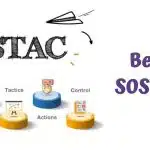From 4Ps to 8Ps: Towards an Integrated Marketing Mix
With the advancement of technology, market perceptions have changed. How to develop and integrate Marketing Mix theory?
The field of marketing is constantly evolving including the concept of marketing mix: fundamental changes and improvements have actually occurred in marketing mix theory over the years.
In the previous article “What is Marketing Mix”, we presented the 4Ps of Marketing Mix as the main pillars of Marketing Mix Theory. 4Ps have been associated with Mix Marketing since its inception by E. Jerome McCarthy in 1960 and is centered around the concepts of place, price, product, and promotion.
In the late ’70s, marketers widely recognized the need to update Marketing Mix. This led to the creation of the new Extended Marketing Mix in 1981 by Booms & Bitner, which added 3 new elements to the 4 Ps principles. This allowed the expanded marketing mix to include services and not just physical goods. Therefore, the new 8Ps emerged as a marketing model that modifies the 4Ps with some additional pillars. In this article, we want to point out how the 8Ps model distinguishes itself from the previous 4Ps.
Characteristics of 4Ps 8Ps
As mentioned above, the 4Ps include Place, price, product, and promotion. Form 8Ps, on the other hand, is a combination of 4Ps with 4 additional parts, which refer to Planning, processes, people, and physical evidence.
Planning
This is especially important because good planning can help save resources and increase the chances of success.
Planning involves setting objectives, developing a strategy, and allocating resources.
It’s important to have a plan in place before you start promoting your product. This will help you stay on track and make sure that you’re utilizing your resources in the most effective way possible.
For example, a small business might want to plan its marketing activities for the next six months. This would involve setting specific objectives, such as increasing sales by 20% and attracting 100 new customers.
Processes
To be successful, businesses need to have efficient processes in place. This includes all aspects of the business from manufacturing to sales and marketing.
Processes need to be aligned with the company’s objectives and goals. They also need to be efficient so that the company can compete effectively.
For example, a company might have a process for developing new products. This process would involve researching the needs of the target market, designing a product that meets those needs, and testing the product to make sure it is viable.
People
People are an important part of the marketing mix. You need to have a team of people who are responsible for promoting and selling your product.
You also need to have people who are responsible for creating and executing the marketing strategy.
The team should be able to work together and be aligned with the company’s objectives.
For example, a company might have a marketing team that is responsible for creating and executing the marketing plan. The team might also include people who are responsible for advertising, public relations, and social media.
Physical Evidence
Physical evidence is anything that can be touched, felt, or seen. It’s used to reinforce the messages that are being communicated in the marketing mix.
This includes:
1. Your premises
2. Packaging
3. Product design
4. Labels
For example, a company might have physical evidence that reinforces its brand image. This could be anything from the company’s logo to the design of its packaging.
What is the difference between 4Ps and 8Ps?
The difference between 4Ps and 8Ps lies in the purpose we want to achieve. An extended marketing mix helps companies have a deeper understanding of how to meet the needs and expectations of customers. Although sometimes seen as outdated, the 4Ps are an essential tool, which results in particularly useful for small businesses selling a product. In this case, the traditional definition of the marketing mix is more consistent with the concepts and objectives of the internationalization process. It would certainly be possible to use the 8Ps model, given the possibility that efforts to implement this strategy would not be profitable.
But when our business specializes in providing a very distinct service or product, we must choose the 8Ps model. This is where the customer experience and the degree of after-sales support shape customer satisfaction.
It is also important to highlight that the 8Ps help companies review and identify key issues affecting the online marketing mix of all types of businesses. Digital transformation and the emergence of e-commerce have introduced other new aspects related to the ways in which customers find and buy products. The consumer is no longer passive in his choices, but more selective. In this sense, the 8Ps gives the right framework, moving from a company-centric perspective to a consumer-centric one thanks to the three additional variables.




